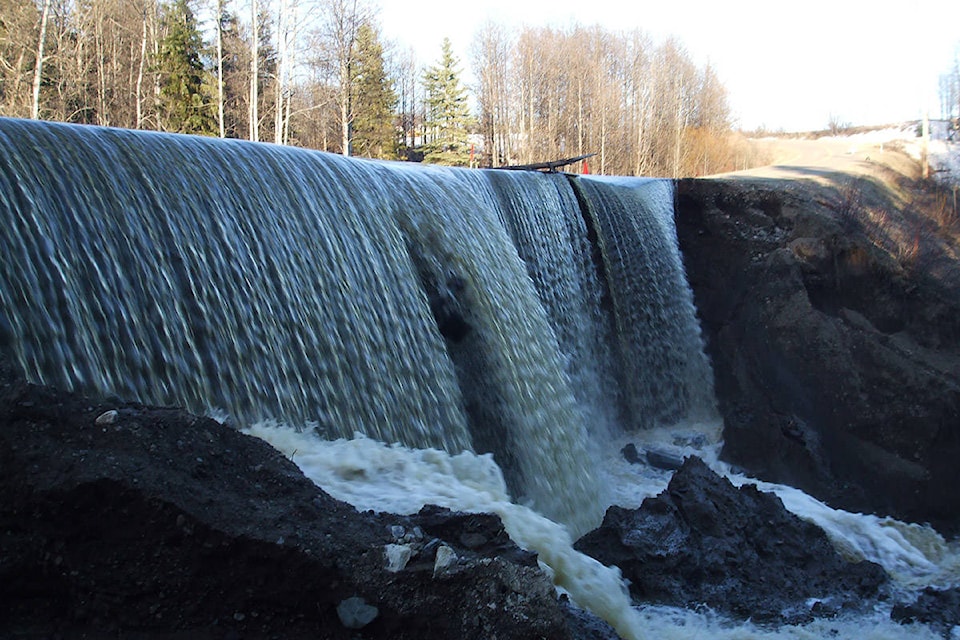During floods, the main role of the Regional District of Bulkley-Nechako (RDBN) is ensuring public safety, but it also serves to protect property, according to planning director Jason Llewellyn.
Llewellyn broke down the regional district’s flood-related responsibilities — and some of its activities during this year’s floods — following inquiries by the Lakes District News.
Public notices and evacuation alerts
Based on information from the provincial River Forecast Centre, the RDBN issues notices to the public as needed. Potential safety risks lead the RDBN to issue evacuation alerts for specific places — such as the one for the Ebenezer Flats area of Smithers, which was still in effect as of May 18.
13,500 sandbags distributed
The RDBN provides sand and sandbags to residents to protect their homes. The province supports this by giving the regional district sandbags and reimbursing the cost of sand delivery.
“Sandbags are typically made available for pick up at the local transfer stations, and sand is delivered directly to the resident’s property,” said Llewellyn. The actual bagging of the sand then occurs at the residence.
This year, the RDBN has delivered about 13,500 sandbags and 485 yards of sand. This material has been spread out across the lakes and rivers of the region to protect 35 properties, he said.
Emergency response
If bank erosion poses an imminent threat to someone’s home, the RDBN — in cooperation with the province — can provide emergency works to protect the dwelling.
On-scene response agencies also receive support or coordination “if required” from the RDBN, said Llewellyn.
Liaison between residents and province
The regional district has no jurisdiction over roads or road drainage, said Llewellyn. But he added that the RDBN often serves as a liaison between residents and the provincial transportation ministry or its highway contractors.
The regional district also plays the role of go-between for residents and the provincial Ministry of Environment when locals need approvals for works “in or near a watercourse to protect a rural property from flooding or bank erosion.”
Food and shelter for emergencies
In extreme cases, the regional district has important decision-making powers.
“If flooding occurs to the extent that dwellings becomes inhabitable, or an area becomes unsafe, the RDBN will declare a state of local emergency and issue an evacuation order requiring residents to leave the unsafe area,” said Llewellyn.
But that authority is limited to rural areas. “The RDBN has the authority in the rural area, municipalities have the authority in their boundaries,” Llewellyn said. “First Nations have the authority on reserves.”
The regional district has an emergency support services program, which it would activate in this kind of scenario, to ensure that basic needs — including food and shelter — are met for residents, Llewellyn said.
He added that during an evacuation, the regional district coordinates with the RCMP, search and rescue services and other first responders. And when flood waters recede, the RDBN works with residents to make sure they can safely access their homes and get services back, he said.
Assistance across jurisdiction
Although First Nations reserve land and areas within municipal limits are technically outside of the RDBN’s jurisdiction, “assistance would be provided as appropriate on request,” according to Llewellyn.
